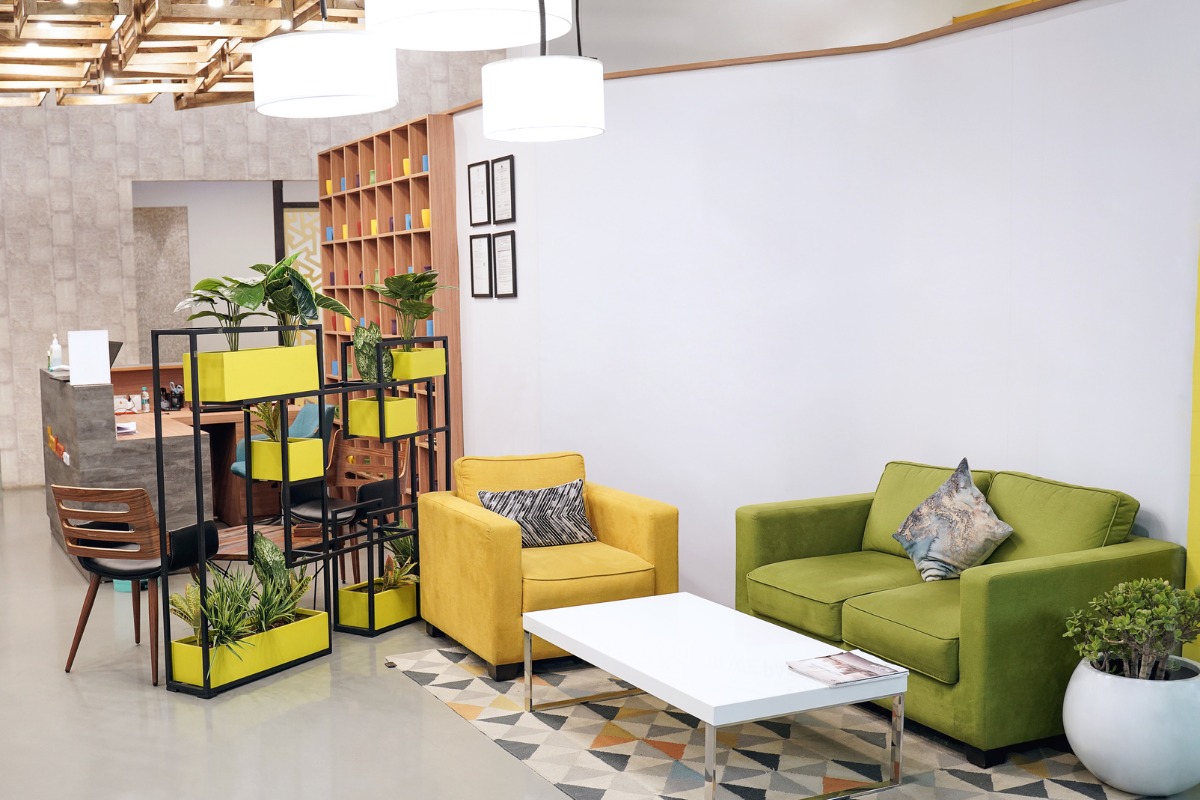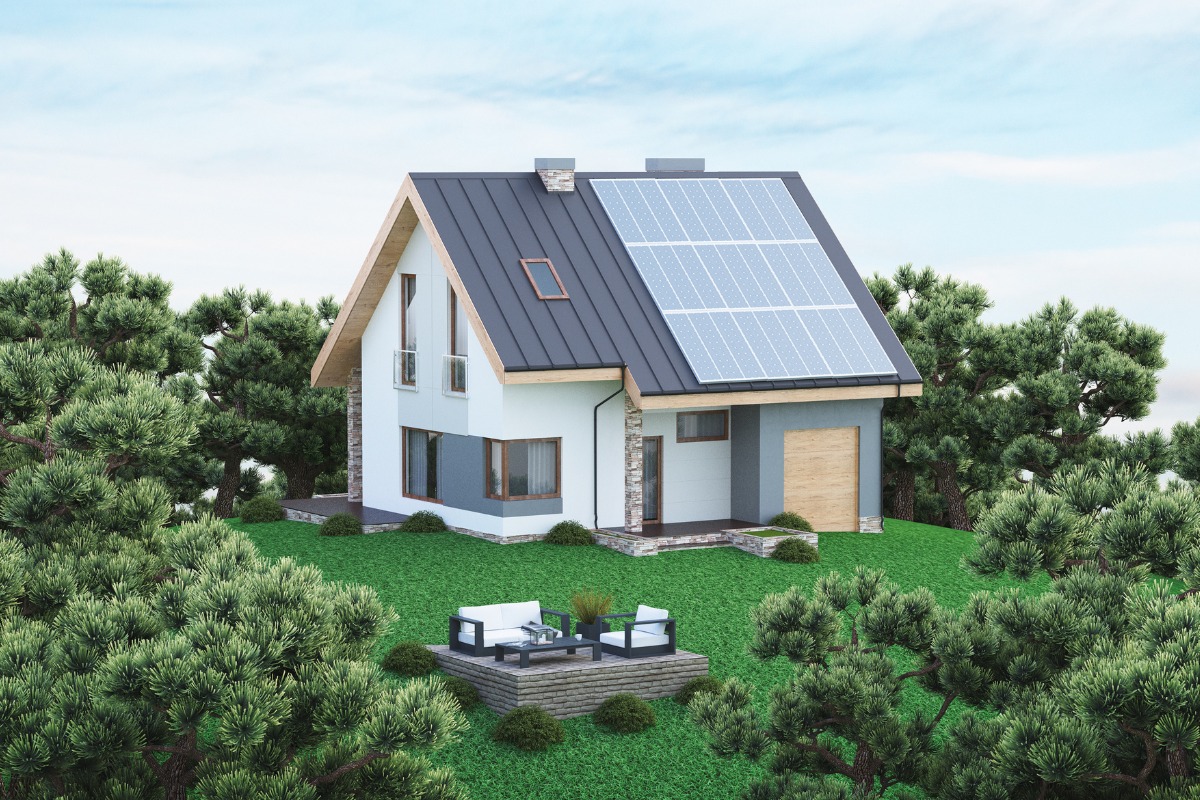As we become increasingly mindful of our environmental impact, we’re recognizing the potency of sustainable architecture in shaping our well-being. Nature-inspired interiors remind us of our inherent connection to the outdoors, leading to the embracement of indoor greenery and wellness-focused design within our living spaces. At the heart of this movement are biophilic office spaces and residences, which are not merely aesthetic choices but purposeful strides toward an eco-conscious lifestyle. Through nurturing these connections, we build homes that do more than house us; they enrich our experience of daily life whilst honoring our planet’s fragile ecosystems.
Key Takeaways
- Biophilic design fosters a deeper connection with nature, promoting sustainable living practices.
- Incorporating natural elements like indoor greenery contributes to mental and physical health benefits.
- Wellness-focused design is critical in creating spaces that improve well-being and happiness.
- Sustainable architecture isn’t just beneficial for the environment, but also for our sanctuaries.
- Nature-inspired interiors can significantly lower stress levels and enhance overall life satisfaction.
- Biophilic office spaces are at the forefront of a new wave in wellness-focused commercial design.
Understanding Biophilic Design in Modern Homes

Embarking on the journey of transforming our living spaces into healthy living spaces, we recognize that biophilic design trends offer more than aesthetic value. This philosophy intertwines with our daily lives, crafting environments that replenish our mental and physical health. By infusing natural lighting, incorporating an array of sustainable materials, and breathing life into our interiors with nature-inspired hues, we construct not just homes, but sanctuaries.
As advocates for biophilic design, we prioritize creating environments that harness the intrinsic value of the natural world. This approach manifests through design features that connect us more deeply to nature. Below we explore the core components that serve as the pillars of this transformative design ethos:
- Sustainable Materials: We select eco-friendly resources that do not deplete the environment, thereby contributing to both the health of the planet and our homes.
- Nature-Inspired Colors: The hues we choose echo the palette of nature, soothing the mind and laying the foundation for a serene living atmosphere.
- Verdant Indoor Gardens: Bringing greenery indoors, these spaces offer more than aesthetics; they purify the air we breathe and connect us to the lifecycle of nature.
We also understand the importance of light as a central aspect of biophilic design. Natural lighting not only reduces the reliance on artificial fixtures but also plays a vital role in our well-being, syncing with our circadian rhythms and lifting our spirits. Below, a comparative study of rooms with and without natural lighting features underscores the transformative impact of sunlight in our spaces:
| Feature | Room with Natural Lighting | Room Without Natural Lighting |
|---|---|---|
| Ambiance | Warm, Inviting | Artificial, Closed |
| Health Impact | Improves Mood, Supports Circadian Rhythm | Potentially Disruptive to Sleep Patterns |
| Energy Efficiency | Less reliance on electric lighting | Higher electricity consumption |
| Connection to Outdoors | Strong visual and emotional connection | Limited or No Connection |
In conclusion, as we align our living spaces with the dynamic rhythm of nature, we foster an environment that supports a harmonious and health-focused lifestyle. The fusion of biophilic design trends within modern homes is more than just a passing fancy—it is a commitment to promoting sustainability, well-being, and a profound connection to the natural world.
The Role of Sustainable Materials in Biophilic Interiors
Embracing biophilic design principles, we understand that the materials we choose are at the heart of creating an eco-friendly home environment. Sustainable materials are not only essential for our planet but they also add a unique aesthetic and tactile quality to our living spaces.
Choosing Furniture with Eco-Conscious Materials
When selecting furniture, we prioritize eco-conscious materials such as bamboo, cork, and recycled plastic. These materials are revered for their low environmental footprints and durability. Bamboo, for instance, is a rapidly renewable resource that offers the strength of traditional hardwoods. Cork is harvested from the bark of cork oak trees without harming the tree, making it a sublime choice for those looking to meld sustainability with style. Recycled plastics, on the other hand, divert waste from landfills and reduce our reliance on virgin materials, closing the loop in the product lifecycle.
Natural Materials Enhancing Home Atmosphere
In addition to sustainable manufacturing, natural materials such as wood, stone, and clay contribute to a sense of warmth and authenticity in our homes. Their intrinsic textures and colors are integral to creating an atmosphere that is both inviting and connected to the natural world. By integrating these elements, we are not just decorating spaces—we are crafting an environment that rejuvenates and inspires, in alignment with the biophilic design ethos.
Biophilic Design Trends Shaping the Indoor Environment

As champions of biophilic design, we’ve embraced the transformative power of green roofs and natural lighting in creating serene indoor environments. These elements are more than just trends; they are vital components of a design philosophy that blurs the lines between the built environment and the natural world. Green roofs, which serve as an oasis in urban settings, are not only visually appealing but also contribute to biodiversity, thermal insulation, and stormwater management. Meanwhile, natural lighting has always played an indispensable role in elevating our connection with nature. By installing skylights and implementing large, open windows, we introduce a dynamic element to interiors, allowing the rhythm of day and night to naturally dictate the mood and ambiance of our spaces.
“Natural lighting and green roofs are not mere accessories to contemporary architecture; they are integral to cultivating a coherent and harmonious biophilic aesthetic.”
Let’s delve deeper into how these components of biophilic design are influencing our living and working spaces:
- Green roofs act as ecological buffers in dense urban environments, mitigating the heat island effect and improving air quality.
- Natural lighting boosts mood and productivity, harnessing the sun’s cycles to align our circadian rhythms with the natural world.
- Skylights and large windows not only provide a source of daylight but also offer visual access to the sky, weather, and nature’s cycles, promoting mental well-being.
In our quest to foster spaces that resonate with nature, we’ve compiled a table that compares the benefits of green roofs and natural lighting:
| Feature | Benefits | Impact on Well-being |
|---|---|---|
| Green Roofs | Increased insulation, Habitat creation, Stormwater management | Reduction in stress levels due to natural views, Improved air quality |
| Natural Lighting | Energy conservation, Enhanced space aesthetics | Regulation of circadian rhythm, Increased vitamin D exposure |
With the seamless integration of green roofs and natural lighting into our daily habitats, we’re paving the way toward more sustainable, health-oriented living environments. It’s a compelling journey that we continue to explore, and the positive implications for future design are as boundless as the horizon.
Incorporating Nature-Inspired Color Palettes
Embracing nature-inspired color palettes within our living spaces is akin to painting with the earth’s intrinsic beauty. We not only pay homage to the outdoors but also cultivate an environment that enhances our mental oasis. The lush greens of forest canopies, the serene blues of ocean vistas, and the grounding browns of the earth itself are not just pleasing to the eye; they also have the power to influence our mood and mental well-being.
When we infuse these natural hues into our interiors, we’re not just following a trend; we’re tapping into a deep-seated connection to nature that has the power to soothe and rejuvenate. The color green, with its association with growth and renewal, brings a refreshing and life-affirming energy to any room. Shades of blue evoke the expansiveness and calm of the sky and sea, promoting tranquility and focus. Browns, from the light tan of sandy beaches to the dark soil of fertile ground, anchor our spaces with a sense of stability and resilience.
- Leveraging the tranquility of greens to create a restorative space
- Utilizing the calmness of blues for a serene and focused ambiance
- Incorporating the stability of browns to ground and comfort
Our approach to these natural palettes is not one-size-fits-all; rather, it allows for a versatility that pays tribute to individual preferences and the unique vibe of each space. It’s about creating a backdrop that nurtures and complements our psychological needs, setting the stage for a home that is both a sanctuary and a source of invigoration.
In designing with nature in mind, we ensure that our homes speak the language of the outdoors, harmonizing with the very essence of our planet’s palette.
Creating Indoor Ecosystems with Gardens and Greenery

Indoor gardens are transforming our homes into vibrant ecosystems, offering much more than just a visual delight. These lush spaces are central to promoting a healthier, more sustainable lifestyle, entwining the beauty of the outdoors with the comfort of our indoor surroundings. Our adoption of indoor gardens and functional indoor gardening practices is a testament to our commitment to environmental stewardship and personal wellness.
Benefits of Indoor Gardens Beyond Aesthetics
While the aesthetic appeal of lush foliage and vibrant flowers is undeniable, the benefits of indoor gardens reach far deeper. They act as natural air purifiers, improving indoor air quality by removing toxins and releasing oxygen. Moreover, these green spaces can significantly reduce stress levels, boost mood, and increase our sense of well-being and productivity. It’s a way to bring the restorative effects of nature right into our homes.
Herbs and Vegetables for Functional Indoor Gardening
Practicing functional indoor gardening by cultivating herbs and vegetables at home brings a slice of self-sufficiency to our busy lives. It nurtures a hands-on connection with our food, from seed to plate. Let’s dive into some of the most common plants that can thrive indoors and contribute to our culinary creations.
| Herb/Vegetable | Light Requirement | Watering Frequency | Benefit |
|---|---|---|---|
| Basil | Full sun | Keep soil moist | Rich in antioxidants, enhances the flavor of dishes |
| Cherry Tomatoes | Full sun | 1-2 times weekly | High in vitamins A and C, ideal for small spaces |
| Mint | Partial shade | When soil is dry to the touch | Aids digestion, a versatile culinary herb |
| Spinach | Partial sun | Keep soil moist | Loaded with nutrients, grows quickly |
| Chives | Full sun to partial shade | When soil is dry to the touch | Contains vitamins and minerals, perfect for garnishing |
Gardening within the confines of our homes is an enriching activity that can be both aesthetically pleasing and functionally rewarding. By integrating indoor gardens, we create living spaces that cleanse the air, enhance our diets, and connect us more deeply to the natural world. The practicality of functional indoor gardening cannot be overstated; it goes hand in hand with our quest for sustainability and natural balance.
Enhancing Well-being with Water Features and Natural Light
In our quest to foster well-being within our living spaces, we recognize the dual importance of incorporating water features for their role as natural humidifiers and the strategic placement of windows to maximize daylight. Strategic window placement not only floods our homes with light but aligns our daily rhythms with the natural cycle of day and night, offering numerous health benefits.
Water Features as Natural Humidifiers and Aesthetic Elements
Integrating water features such as fountains and indoor ponds does more than merely elevate the aesthetics of a home. These elements act as natural humidifiers, releasing moisture into the air, which can improve air quality and promote a comfortable living environment. The soothing sounds of water movement further enhance the ambiance, contributing to stress reduction and mental clarity.
Maximizing Daylight with Strategic Window Placement
Windows are the soul’s connection to the outdoors. By positioning windows in a manner that captures the optimal amount of daylight, we illuminate our homes with the sun’s gentle warmth. This not only reduces the need for artificial lighting but also helps in regulating our circadian rhythms, improving sleep, and bolstering our mood. Intelligent window placement is a cornerstone of design that honors the sun as a natural timekeeper and healer.
- Improvement in air quality through natural humidification
- Enhanced focus and productivity from exposure to daylight
- Reduction in energy costs owing to less reliance on artificial lighting
- Better sleep patterns linked to natural light exposure
As we continue to craft spaces that reflect our commitment to well-being and environmental harmony, integrating these elements becomes a testimony to the elegance and intelligence of biophilic design. We effectively reconnect with the essence of nature, drawing upon its timeless benefits to enrich our contemporary lifestyles.
Biophilic Office Spaces: A Wellness-Focused Approach

Embracing the principles of biophilic design, we recognize the profound impact incorporating natural elements into workspaces can have on employee well-being. Biophilic office spaces are designed with a wellness-focused design philosophy, acknowledging that our surroundings affect our mental and physical health. In the heart of thriving business districts, offices that integrate natural light, indoor plants, and natural materials do not merely function as workplaces; they stand as sanctuaries of productivity and serenity.
Research consistently illustrates that elements of nature in the office correlate with lower stress levels and heightened employee engagement. The juxtaposition between the bustling urban environment and the tranquility of a biophysically-designed office can be visually striking and psychologically beneficial.
Below is an outline of key components that are integral to creating a biophilic workspace:
- Natural Light: Maximizing daylight exposure to boost mood and focus
- Indoor Greenery: Incorporating a variety of plants to purify the air and bring life into the space
- Materials: Utilizing wood, stone, and other natural materials to foster a tactile connection with nature
- Layout: Designing open spaces that encourage movement and collaboration, while offering views of the outdoors
By cultivating an environment that brings the outside in, businesses not only enhance the wellness of their employees but also showcase their dedication to environmental stewardship. To illustrate the commitment of various companies to this transformative design philosophy, consider the following table that contrasts traditional and biophilic office characteristics:
| Feature | Traditional Office | Biophilic Office |
|---|---|---|
| Lighting | Artificial | Natural, with supplemental artificial light as needed |
| Air Quality | Climate-controlled | Enhanced with plant life and ventilation systems |
| Materials | Synthetic | Natural and sustainable |
| Views | Limited or non-existent | Expansive, often featuring landscapes or greenery |
| Layout | Cubicles and enclosed spaces | Open, fluid spaces with areas for retreat |
Moving forward, the call for biophilic office spaces is more than a trend—it’s an employee-centered approach believed to shape the future of wellness-focused design in workplaces around the country. These spaces stand as a testament to an evolving corporate culture, one that values both the environment it inhabits and the individuals it nourishes.
Green Roofs: Merging Sustainability with Urban Architecture
As advocates for sustainable living, we recognize the importance of integrating eco-friendly practices within our urban environments. Green roofs stand at the forefront of this movement, combining the benefits of sustainability with the aesthetics of modern urban architecture. These living installations not only enhance the visual appeal of buildings but also contribute significantly to energy conservation and improved air quality, making them a wise choice for forward-thinking city planning.
Benefits of Green Roofs on Energy Efficiency and Air Quality
The advantages of green roofs are multifaceted, particularly in their contribution to energy efficiency. By providing natural insulation, these roofs help buildings retain heat during colder months and stay cooler when the mercury rises, leading to a substantive reduction in energy consumption for heating and cooling systems. In addition to temperature regulation, the vegetative layer of green roofs acts as a natural air filter, absorbing pollutants and carbon dioxide, thereby enhancing the air quality in our urban jungles. This harmonious blend of function and form ushers in a new era of architectural design that prioritizes both efficiency and environmental mindfulness.
Challenges and Considerations in Green Roof Design
While the adoption of green roofs is burgeoning in cities around the country, it is not without its challenges. The implementation of a green roof must be approached with careful planning and consideration of the building’s structure. Weight is a primary concern, as the additional load of soil, vegetation, and retained water can be significant. Consequently, ensuring structural integrity is paramount, often necessitating reinforcement of the existing roof. Additionally, the long-term success of a green roof hinges on regular maintenance and an appropriate selection of plants that are suited to the specific climate and rooftop conditions. Despite these challenges, we are confident that with the right expertise and commitment to sustainability, green roofs can become a standard feature in urban architecture, promoting a healthier, greener, and more efficient future for our cities.
FAQ
What are the current trends in biophilic design for homes?
The latest biophilic design trends focus on integrating nature-inspired interiors, sustainable architecture practices, wellness-focused designs, and the presence of indoor greenery. These elements aim to create healthier living spaces and extend into the work environment with the introduction of biophilic office spaces.
How does biophilic design contribute to modern homes?
Biophilic design enriches modern homes by connecting the living spaces with nature. It emphasizes healthy living spaces filled with natural lighting and nature-inspired textures and materials, facilitating a habitat that promotes mental and physical wellness.
Why are sustainable materials important in biophilic interiors?
Sustainable materials are a cornerstone of biophilic interiors because they reduce the environmental footprint and support global sustainability goals. Materials like bamboo, cork, and recycled plastic bring an organic feel to furnishings while ensuring longevity and minimal ecological impact.
How do natural materials enhance a home’s atmosphere?
Using natural materials like wood, stone, and clay in interior designs adds warmth, authenticity, and connection to the earth. These materials align with biophilic principles by providing tactile and visual experiences that reflect the natural world.
What biophilic design elements are shaping indoor environments?
Common elements shaping indoor environments with biophilic design include the integration of green roofs, a focus on maximizing natural lighting, and an emphasis on incorporating living plants to foster a closer bond with nature, thus creating inviting and restorative spaces.
How do nature-inspired color palettes influence interior design?
Incorporating greens, blues, and browns, which are inspired by the natural world, into interior design helps induce a calming effect, reduce stress and anxiety, and cultivate a serene and mentally rejuvenating space.
What are the benefits of having indoor gardens apart from their aesthetic value?
Beyond aesthetics, indoor gardens improve air quality, promote a sense of well-being, and can have practical applications such as growing herbs and vegetables. They encourage sustainable living by fostering an intimate engagement with nature.
How can herbs and vegetables contribute to functional indoor gardening?
Functional indoor gardening with herbs and vegetables provides fresh produce, reduces reliance on store-bought goods, involves engaging activities like planting and harvesting, and encourages healthier eating habits while still serving as an attractive design element.
How do water features enhance well-being in homes?
Water features like fountains or ponds act as natural humidifiers, improving indoor air quality, and their gentle sounds provide a soothing ambiance that can alleviate stress, thus enhancing overall well-being.
Why is strategic window placement important for utilizing natural light?
Strategic window placement optimizes natural daylight, offering numerous benefits such as improved mood and productivity, and energy savings by reducing the need for artificial lighting and providing a visual connection with the outdoor environment.
What makes a biophilic office space conducive to wellness?
A biophilic office space incorporates elements like plant installations, natural light, and materials that mimic outdoor environments. These features can improve employee satisfaction, reduce stress, and enhance productivity by creating a healthier, more natural workspace.
What are the benefits of green roofs for energy efficiency and air quality?
Green roofs provide insulation, reducing the need for heating and cooling, and contribute to energy efficiency. They also absorb pollutants and carbon dioxide, which improves air quality in urban areas.
What challenges are associated with designing green roofs?
Designing green roofs entails considering structural reinforcement to support the weight of soil and vegetation, waterproofing, drainage, and ongoing maintenance to ensure the longevity and performance of the green space.

